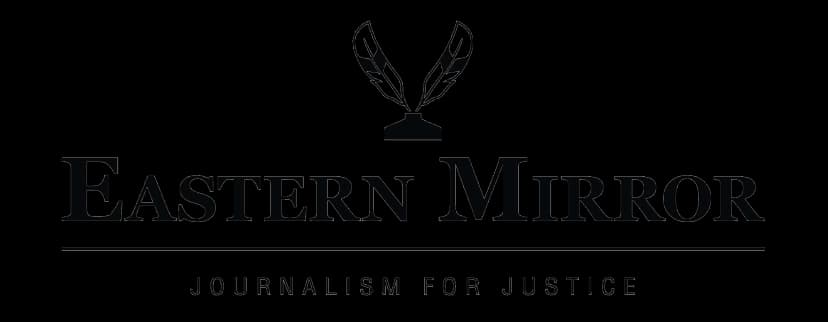THURSDAY, JULY 31, 2025
- Home
- Imago Dei and Social Justice: Investigating the Role of Theology in Addressing Inequality within Naga Society
Imago Dei and Social Justice: Investigating the Role of Theology in Addressing Inequality within Naga Society
The theological concept of Imago Dei emphasises social justice, forming the foundation of Christian social ethics.
Published on Jun 23, 2025
By EMN
Share
The theological concept of Imago Dei (Image of God) emphasises that all humans inherently possess divine dignity and worth, forming the foundation of Christian social ethics. This principle underscores the equality of all people regardless of clan, tribe, race, gender, colour, age, social status, wealth and might. This principle is important because it advocates for justice, compassion, and the dismantling of oppressive structures in the home, church and society. In Naga society, where Christianity is predominant, this doctrine offers a transformative lens to address entrenched inequalities that are often swept under the rug.
The Naga people, residing in Northeast India and Northwest Myanmar, have a history marked by colonial influence, conflict for autonomy, and a transition from animism to Christianity. All within a span of a few hundred years. Despite our Christian identity, inequalities still persist.
For instance, gender disparity is observed where patriarchal norms often marginalise women in leadership roles, especially within the church. Economic stratification exists as post-conflict development gaps enlarge and resource inequity affect marginalised groups. Tribal/clan hierarchies are visible where historical inter-tribal tensions and clan-based discrimination persist.
Post-conflict marginalisation is seen where post-insurgency dynamics have left some communities, including widows and orphans, vulnerable to exploitation by those with vested interests.
As a pivotal institution, the Naga church wields significant influence. It is a powerful agency which can mobilise and empower people across a broad spectrum in the struggle for justice and peace within the Naga community. While it has been a unifying force, its focus on personal piety over structural justice sometimes perpetuates the status quo.
Now, personal piety cannot be overlooked in the Christian life; however, Christian life is not individualistic. It is a community-oriented faith which challenges the oppressive structures in human society and envisions the kingdom of God being manifested here on earth. Reorienting theological emphasis toward Imago Dei could reposition the church as a catalyst for social change. Once people learn to recognise, acknowledge, and appreciate that every person bears the image of the Creator, they will be duty-bound to treat each other with more respect. The biblical teaching of “do unto others as you would have them do unto you” will begin to make further sense.
Done right, we will witness gender justice being realised as both genders challenge patriarchal norms by affirming women’s equal reflection of God’s image, advocating for their inclusion in leadership and education. Economic Equity will become a possibility through church-led initiatives like cooperatives and fair resource distribution, rooted in the dignity of all. Intertribal reconciliation will not be a farfetched dream when we frame peacebuilding as recognising Imago Dei in “others,” fostering unity amid diversity. Environmental stewardship may take shape as tribal communities begin to link ecological care to communal dignity, addressing exploitation and climate injustice.
Of course, whenever doing something for the good of the society, we will definitely encounter resistance from traditional structures. For example, leaders benefiting from hierarchies may resist egalitarian theology since it will challenge their authority over the people. The colonial legacy of missionary emphasis on individual salvation over social justice will require decolonized reinterpretations. As well as cultural syncretism will need to be carefully scrutinised by balancing traditional communal values with Christian teachings to reinforce collective dignity.
We would not be on our own in this struggle as others have gone before us. Parallels may be drawn from Liberation Theology, as we learn from Latin American movements, emphasising praxis (action-reflection) in addressing oppression. Naga theological initiatives must also be able to highlight local efforts, such as the theological fraternity and women’s groups using Scripture to advocate for rights or churches mediating tribal disputes.
Engaging Naga theologians, sociological studies, and church documents will enrich this discourse. Future research could explore intersectional inequalities and the role of youth in theological activism. This will be essential for a more well-rounded, well-structured approach while ensuring the dialogue remains dynamic and inclusive.
Imago Dei holds profound potential to reframe Naga societal structures, urging the church to embrace its prophetic role. But only if and when we leave aside our ego and let the Scriptures transform out worldview.
By integrating this theology into education, preaching, and community practices, we the Nagas can confront inequalities while honouring our cultural heritage. This approach will not only address immediate injustices but also foster a holistic vision of human flourishing grounded in divine image-bearing. By weaving Imago Dei into the fabric of Naga society, theology will become a lived experience of justice, transforming both hearts and structures.
Christopher L. Zingkhai

